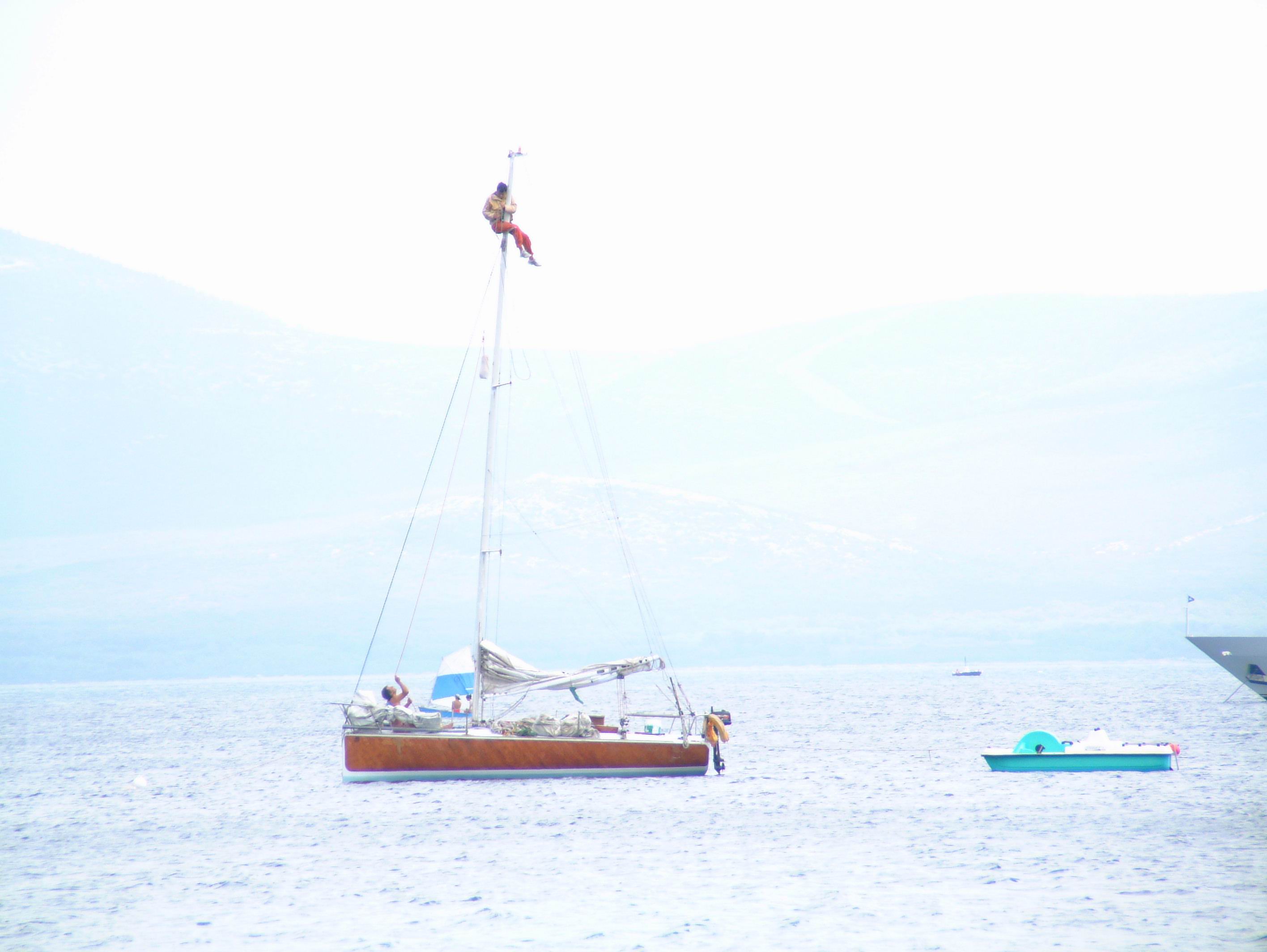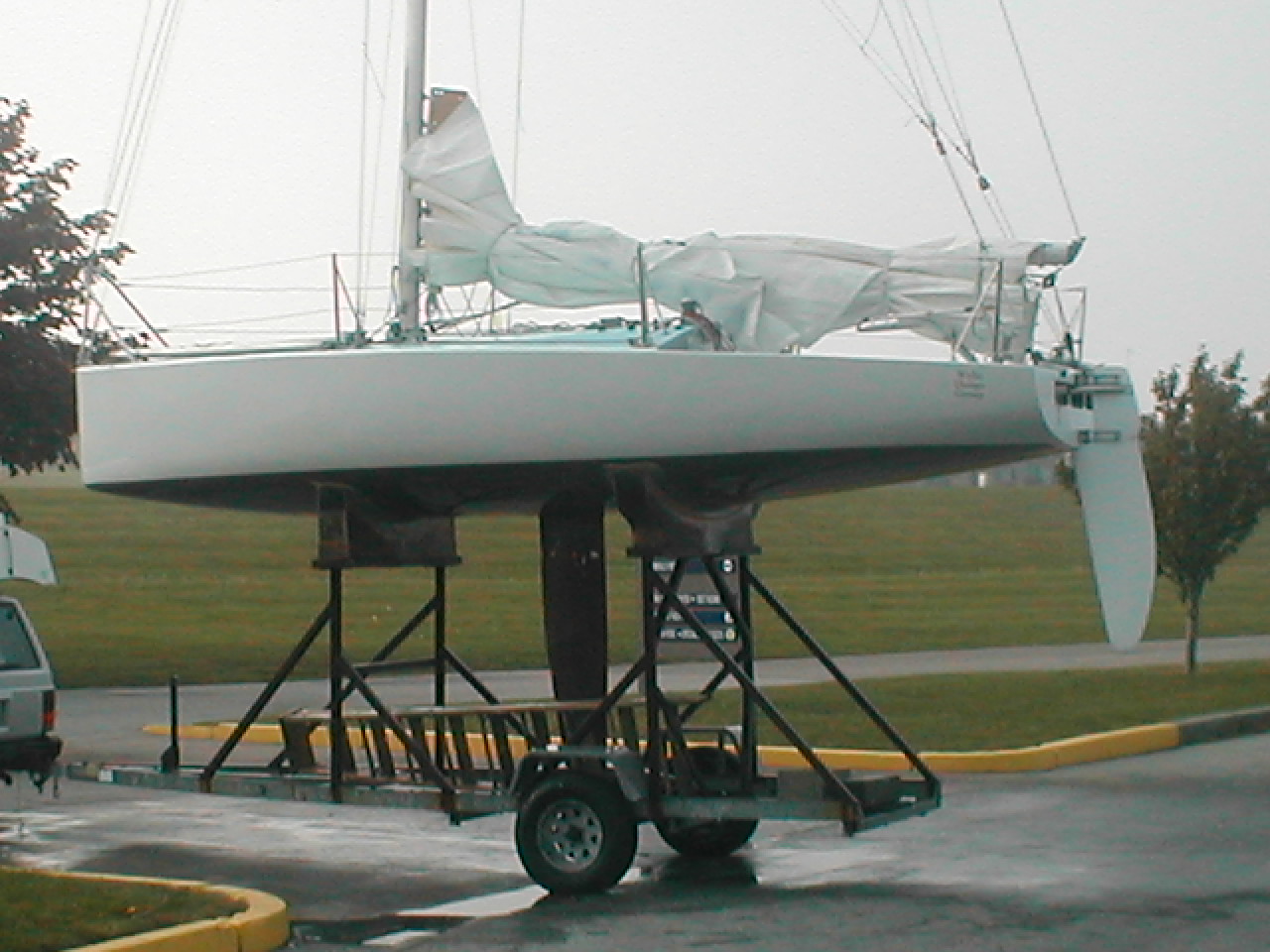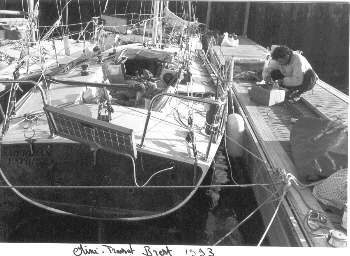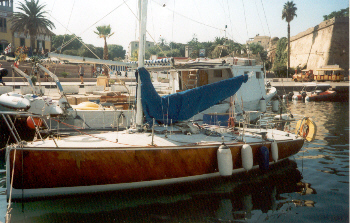One of the many features of a Mini Transat boat that attracted me was the basic premise of the boat. That seamanship was to be to the fore and all the gadgets were secondary.
British Delivery skipper Bob Salamon saw that the only game in town then, the O.S.T.A.R was getting too far away from its original, inexpensive, “run what ya brung”roots with big campaigns,big boats and big budgets. He wanted to offer a race that went back to basics. He thought that there would be enough sailors who would be attracted by the idea of preparing your own small inexpensive boat for a 3500 mile ocean passage, creating your own weather forecasts from simple tools like a barometer, air and water temp. and clouds were the only ways available then of course, plus the the sailing, navigation-Sextant and the seamanship required to make the passage.
This idea struck a chord with a young Californian sailor named Norton Smith. He had, I think,participated in one of the, if not THE first Single-handed Trans-Pac in possibly 1977. Following the first Mini Transat, Smith researched the boats and the race and ultimately commissioned local San Francisco Bay sailor and designer Tom Wylie to design him a boat. Wylie also ran a boat building business and so the boat that became American Express was built by Wylie in his shop in, I recall, Alameda on the North side of San Francisco Bay.
15 or so years later when I was having Wylie build parts of my boat I learned a bit about Smith’s boat.
It was cold molded plywood. It was to have water ballast in it, for at the time the Mini Rules were a bit like the 18 foot skiff rules in Australia: “The boats are 18 feet long and the start is at 2:0 pm”. Well the minis were roughly the same for the boats themselves. “They gotta be 6.5 meters long and the start is in September”. There were a few regs for the sails and kit required, but nothing like today.
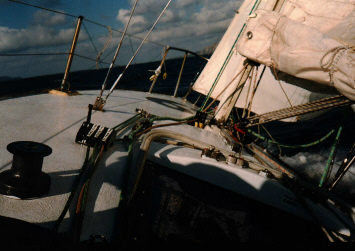
Well before the current crop of Mini’s with their cabin tops and escape hatches, American Express sailed in at least two Mini Transats, winning the 1979 edition.
The way Smith and Wylie calibrated the water ballast configuration was very practical and well before the now default standard 10 degree rule. This 10 degree rule common virtually default rule in solo offshore races and boats today and requires that any device that impacts stability of the boat usually water ballast or canting keels is restricted to a maximum heel angle at the dock of 10 degrees.
Remember too that this is years before the BOC and all the races it has wrought. Really the only Name Brand solo race was the O.S.T.A.R.

Compare the very “normal” hull shape and keel with the inboard rudder in this picture of American Express from the early 1990’s with the keel and shape below.
They build the boat and went sailing on SFO bay. They rigged up a kite pole with a large drum or water carrier of some sort on the outboard end. The sailed up wind and gradually put more weight on the kite pole that was rigged square to the boats centerline. When the boat recovered from its un-ballasted angle of heel to one they thought was right, and faster, they measured the amount of water and built the tanks inside the boat to that volume.
Another “quick and dirty” detail was the deck. The Moore 24’s were very popular at the time, well they still are, and so they somehow got a Moore 24 deck, placed it on the top of the Wylie Hull and trimmed it to fit the hull, glued it on—Job Done!!!
The fascinating thing about this boat is that it is still active and apparently sailed in the Mini Transat in 1993. Further as the first image will indicate, a mini is incredibly stable. The displacement of a mini is about 2200 lbs, mainly because they must carry about 1,000 of gear including the skipper. The “pull down” stability test described in an earlier post is relatively new but if you look at the first image, on top of a guy up the mast on American Express, in the early 90’s or late ate 1980’s the boat is totally unperturbed by the say 170 pound bloke aloft. 170 over 2200 is close to 8%. We could all contemplate what might happen to our boats if 8% of the boat’s displacement was hoisted to the top of the mast…..
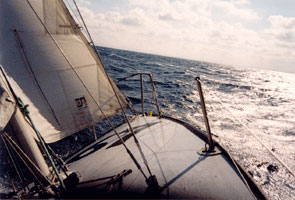
The flat deck was both easy and fast to build and install and lowers the CG of the boat. It works from a sailing the boat and rigging layout too
If I ever act on one of my pet projects, to open a museum or similar institution dedicated to the sub species “Solo and DH sailing racing and cruising”, American Express will be one of the featured boats.

